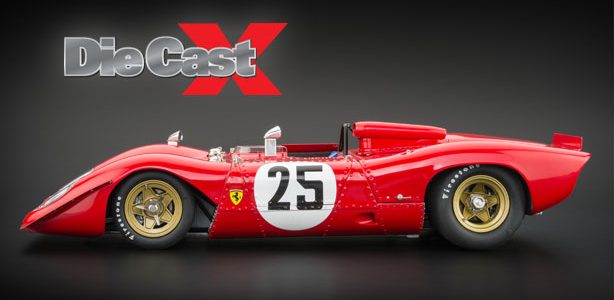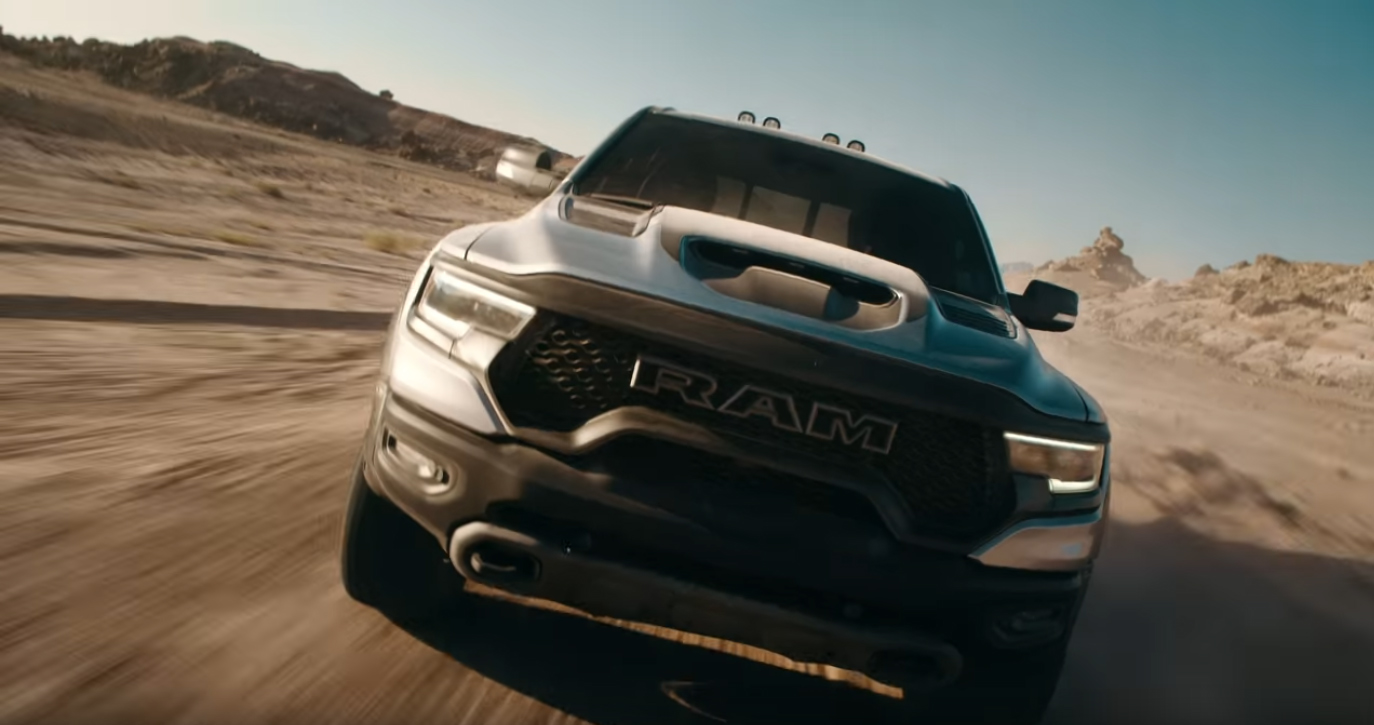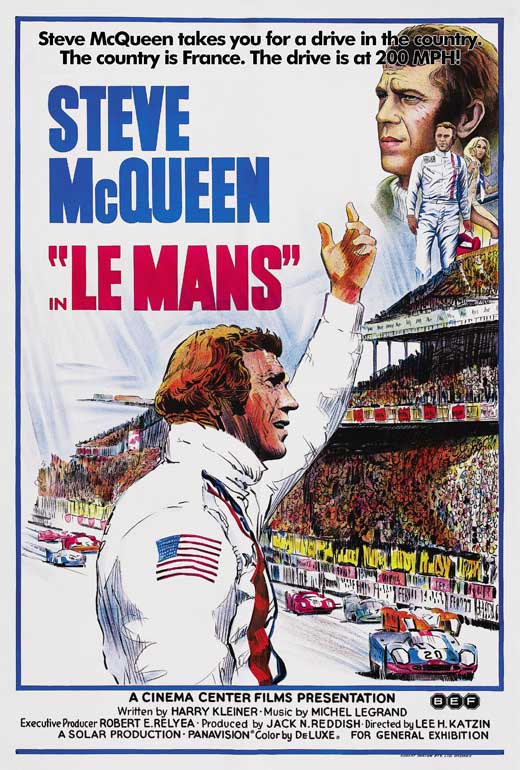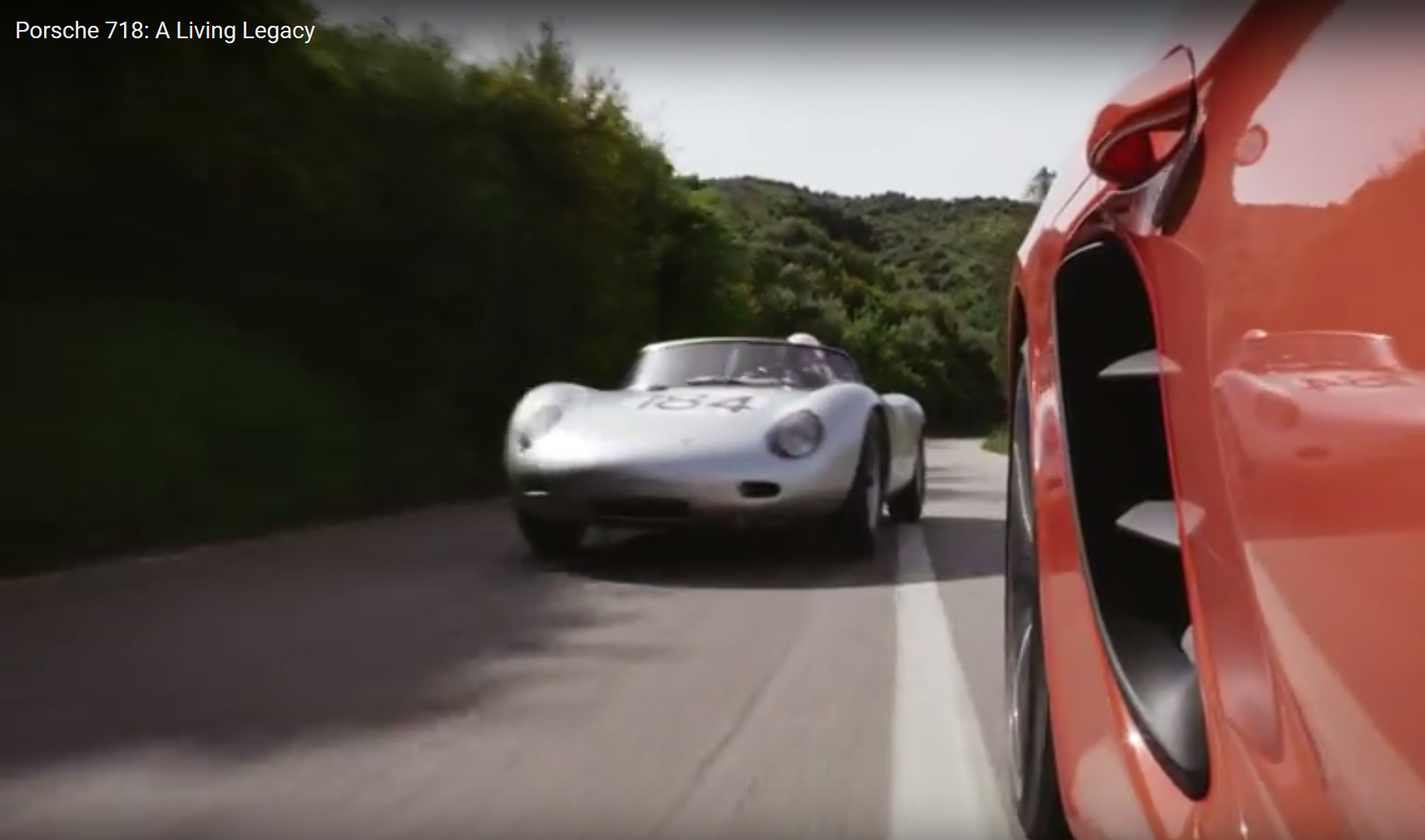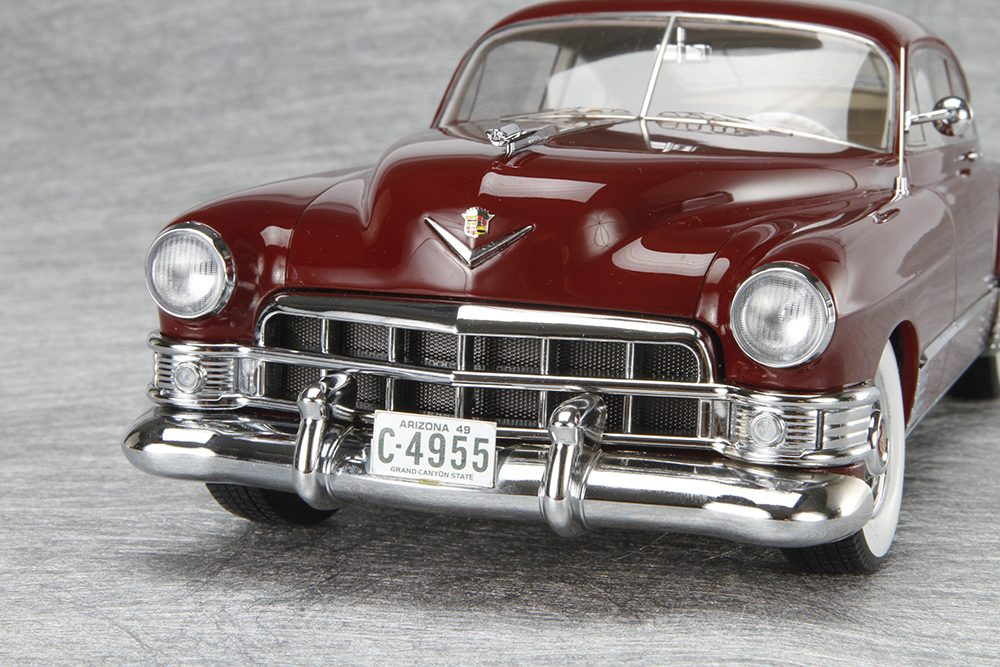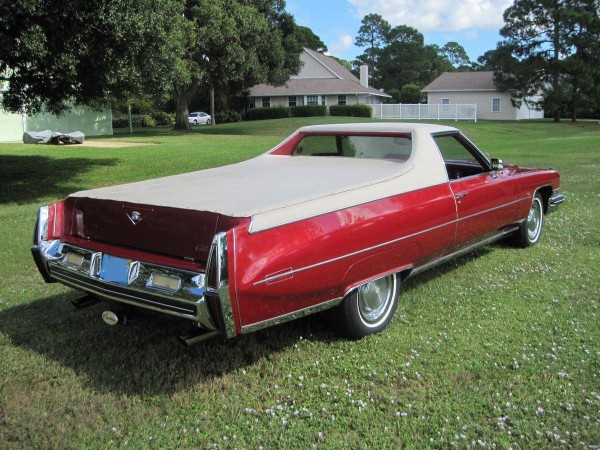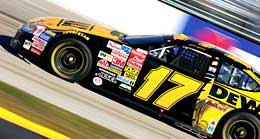 |
| Matt Kenseth, driver of the DeWalt Power Tools Ford (No. 17), races in the Virginia 500 at Martinsville Speedway on his way to the 2003 Winston Cup Championship. |
Back in the late 40s, National Association for Stock Car Auto Racing (NASCAR) president Bill France Sr. seized the idea of racing cars people drove on the streetlate-model sedansand ran with it. No other sanctioning body had done so, and France figured it might increase the publics interest in racing. The success of the Nextel Cup Series proved him right, even as Cup cars have evolved from street stockers into todays purpose-built race machines. From the start, fans followed their favorite drivers and teams and created racing icons.
National Speed Sport News credits the late Dale Earnhardt, The Man in Black, with starting the die-cast craze in 95 when he painted his usually black No. 3 GM Goodwrench Chevrolet silver as a nod to (then Winston) Cup sponsor R.J.
Reynolds. Action Performance sold out of the silver Earnhardt die-casts, starting a trend for special paint schemes and theme cars. Now, cars with one-off paint schemes promote sponsors, movies, or consumer products, and fans buy as many versions of their favorite teams or drivers cars as they can afford or find.
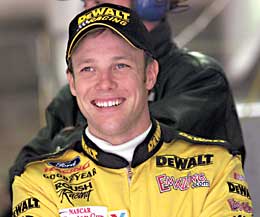 |
| Matt Kenseth is all smiles in the garage area at Atlanta before qualifying. |
Matt Kenseth
DCX interviewed Matt Kenseth at Roush Racing in Concord, North Carolina, where his team (as well as those of Kurt Busch, Mark Martin, Greg Biffle, Jeff Burton, Carl Edwards and Jon Wood)-and die-cast maker Team Caliber-a Roush subsidiary are based. A native of Cambridge, Wisconsin, the 2003 Winston Cup champion was introduced to racing by his father, Roy, who made a deal with him on his 13th birthday: Roy would buy a car to race, and if Matt worked on it, it would be his when he turned 16. In 1988, 16-year-old Matt entered his first stock-car race, and two races later, he won his first feature event.
On Wisconsin’s late-model circuit, 19-year-old Matt Kenseth emerged as the youngest ARTGO Challenge Series winner ever-a record previously held by his Roush Racing teammate Mark Martin. In three years, Matt took 46 super-late-model wins, including the Alan Kulwicki Memorial Race and track championships at Madison International Speedway and Wisconsin International Raceway, and he became the youngest winner of the Miller Genuine Draft National Championship.
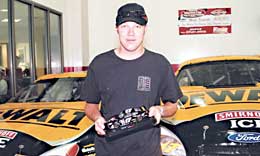 |
| Matt Kenseth, the 2003 Winston Cup champion, in the No. 17 garage at Roush Racing with die-cast of his current Cup and Busch Series cars. |
Matt placed third in the Hooters ProCup Series in ’96 and second in the American Speed Association (ASA) Series in ’97. While running ASA, Robbie Reiser called with a ride for him in the Busch Series. During 1998, his first full season, Kenseth scored three wins, 17 top fives and 23 top 10 finishes-more top 10 finishes than any other Busch Series contender. That September, he also made his Winston Cup debut at Dover Downs: he substituted for Bill Elliott in the McDonald’s Ford and finished sixth in his first start.
In 1999, Kenseth made five Cup starts for Roush and DeWalt Tools. The highlight of the year came at Dover Downs, where Matt took fourth.
In 2000, in his 19th Cup start, Matt captured his first career victory at the Coca-Cola 600: he finished 14th in points and took the Raybestos Rookie of the Year title with his unmatched consistency, recorded four top fives and 11 top 10s and won more than $2 million. In 2002, he had a series-leading five wins, but a lack of consistency hurt his title run; his crew did win their second straight pit-crew championship, though.
Kenseth won the final Winston Cup Championship in 2003 (for 2004, it’s the Nextel Cup), having placed first in only one race. He held the points lead for 34 weeks to earn Roush Racing’s first-ever Cup title; he lead the series with 23 top 10 finishes and 11 top five finishes and earned more than $9 million.
DieCastX: You’ve actually won more races already this season than you did during all of 2003, but your overall results are mixed. What are you doing to try to improve things and to get back in the hunt for the Championship again?
MK: We’ve had some things happen that have been our own doing, and we’ve also had things happen that were bad luck or whatever, so we’re just looking at all we can control and trying to do a better job.
DieCastX: Do you feel that overall, the new points system is more confusing or more challenging?
MK: I think it’s less challenging; after 26 races, if you’re a good team, and you can win races and you’re still fairly consistent, hypothetically, you can still be in the top 10-400 points out because you made 400 points’ worth of mistakes, and get that reset to basically zero with 10 races to go. I think it allows teams and drivers to be able to make more mistakes and still have a shot for a championship. Where in the past, you had to do a great job all year long at every track to have a shot.
DieCastX: Is there anyone you think is “sandbagging” right now?
MK: I don’t think so. You don’t have anything to gain now, but when you do make a mistake-you drop out of a race or whatever-the consequences aren’t as big as when you’re racing toward the championship. Your goals aren’t really crushed, but if you count every point all year long, if you have a couple of DNFs, that goes towards your season end total, where it really doesn’t do that now. You still have to be good to stay in that top 10 because the competition is really tough, but it’s not as difficult to qualify for the championship as it used to be.
DieCastX: What part does merchandising play in the overall scheme of things for drivers? How do you see it from a driver’s standpoint and your interaction with fans?
MK: It’s cool to be able to have repli
cas of the cars we race for the fans. I know a lot of my fans who have collected every car since we started racing. It gives them the ability to look back through my career. I’ve collected every one-at least, the base ones-so I can look back through every year and see them all lined up, and it’s kind of cool.
| CLICK IMAGE TO ENLARGE |
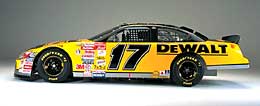 |
DieCastX: Collectibles sales seem to be going very well. Seeing all that merchandise being sold is pretty gratifying, isn’t it?
MK: It’s pretty neat to see. It’s not just the business end of it; I don’t really care about that much. It’s just cool to see how much fan support we have and how much people are buying to show their support, and to have collectibles maybe to remember our championship year, or a win we had, or whatever. It’s really cool to see because it means your fan base is growing. Whenever your fan base grows and there are people behind you, that’s a really great feeling.
DieCastX: You won a championship relatively early in your career; how do you top that?
MK: Try to do it again. You can always do better, no matter what. We always want to win more races and try to win more championships; that’s what our goal is: try to do better than what we’ve been doing. Staying on top is a very difficult task; it’s very competitive, and it’s tough to stay on top of things. We want to do better so we can win more races and more championships.
DieCastX: Have you considered doing any other form of racing?
MK: Not really. This is the only kind of racing I’ve ever really wanted to do or have been a part of. Some days, you might think about racing different short-track stuff or maybe racing late models or something I’ve never been able to try before, but pretty much this is everybody’s goal is to get to this series, and this is what we’re focused on.



